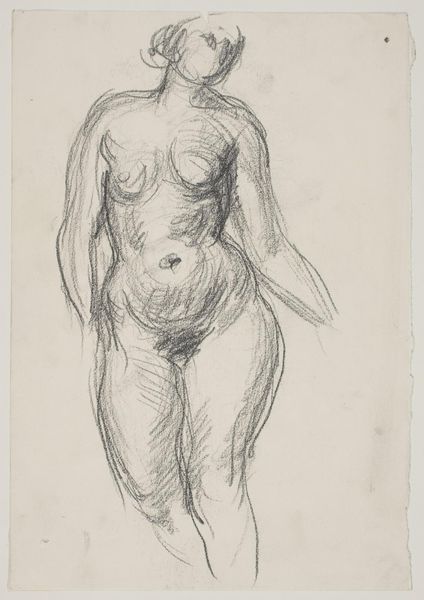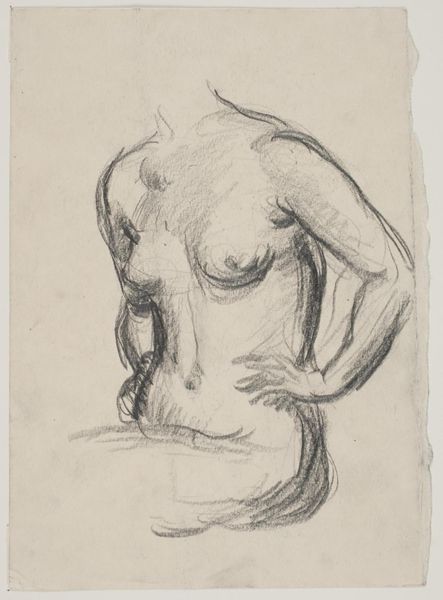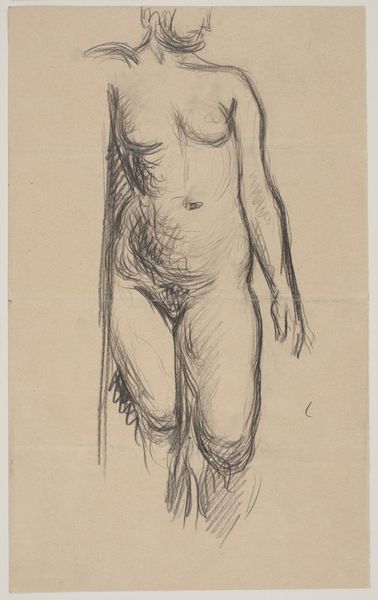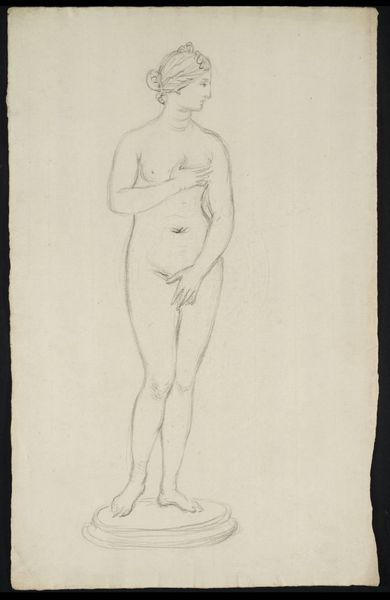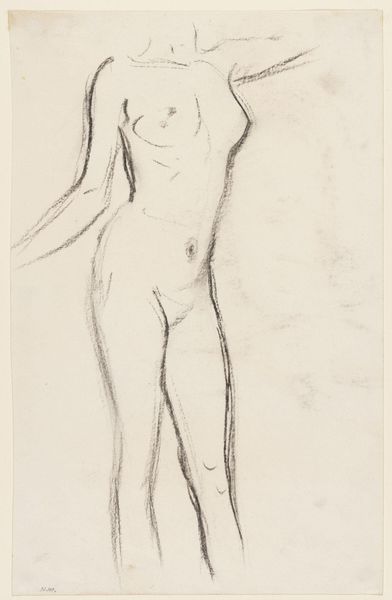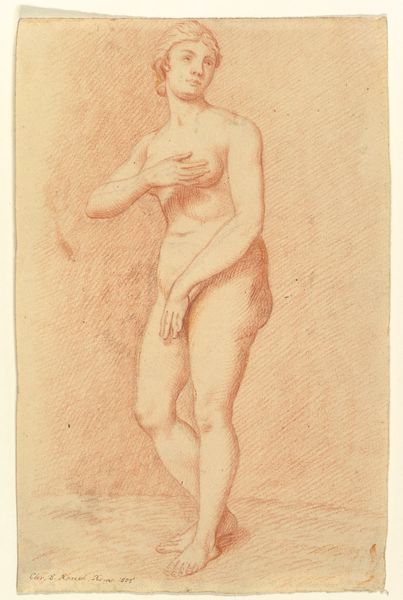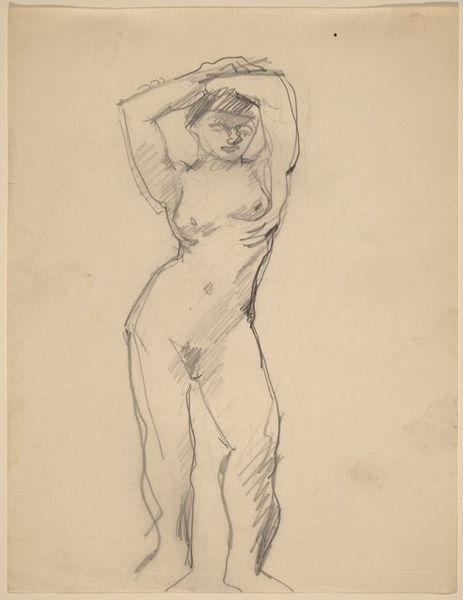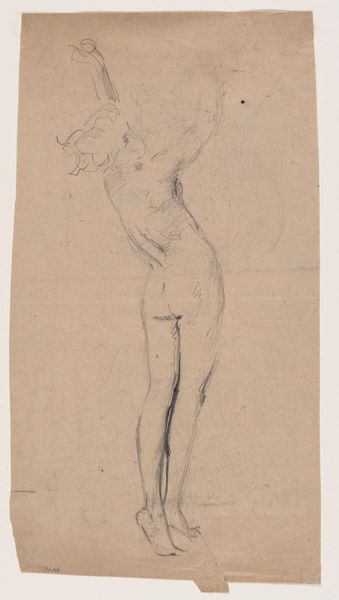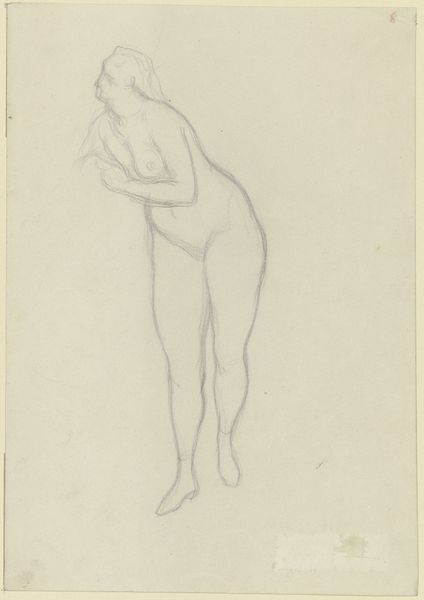
drawing, pencil
#
portrait
#
drawing
#
figuration
#
pencil drawing
#
pencil
#
nude
#
realism
Dimensions: 270 mm (height) x 188 mm (width) (bladmaal)
Editor: This is Vilhelm Lundstrom’s “Stående kvindelig model,” made with pencil sometime between 1918 and 1923. It's at the Statens Museum for Kunst. There’s a directness to this sketch; it feels unfinished yet powerful in its simplicity. What strikes you when you look at this piece? Curator: I'm immediately drawn to the gestural lines around the figure's head. They suggest a kind of halo or perhaps a veiled reference to classical statuary. Think about it: the absence of distinct facial features, coupled with those encircling lines, elevates her, doesn't it? What connotations do you think Lundstrom aimed for? Editor: I see what you mean about the classical influence. Maybe the artist wanted to idealize her, yet the rough, unrefined lines also keep it real. What does that tension convey? Curator: That tension, precisely! It evokes the weight of history, the legacy of portraying the female form, juxtaposed with a modern, more honest approach. Do you perceive vulnerability, strength, or both in the figure's posture and the way her body is rendered? Editor: I'd say both. There's a commanding presence in her stance, but the sketch-like quality hints at something fragile. It feels deeply human. Curator: Human indeed. Consider how the very act of sketching, the visible process of creation, becomes a symbol in itself – of fleeting moments, of the artist's own gaze and interpretation, which has always defined the canon of nudes. And think of how Lundstrom adds himself to that history through this one image. Editor: So it's like he’s using these historical symbols, not just to represent the model, but also his place in art history. It makes me wonder how much our view is shaped by all the art we’ve seen before. Curator: Exactly! It reminds us that every image is born out of a cultural memory. Understanding those visual cues is key. Editor: I see this drawing so differently now, thinking about art history!
Comments
No comments
Be the first to comment and join the conversation on the ultimate creative platform.


